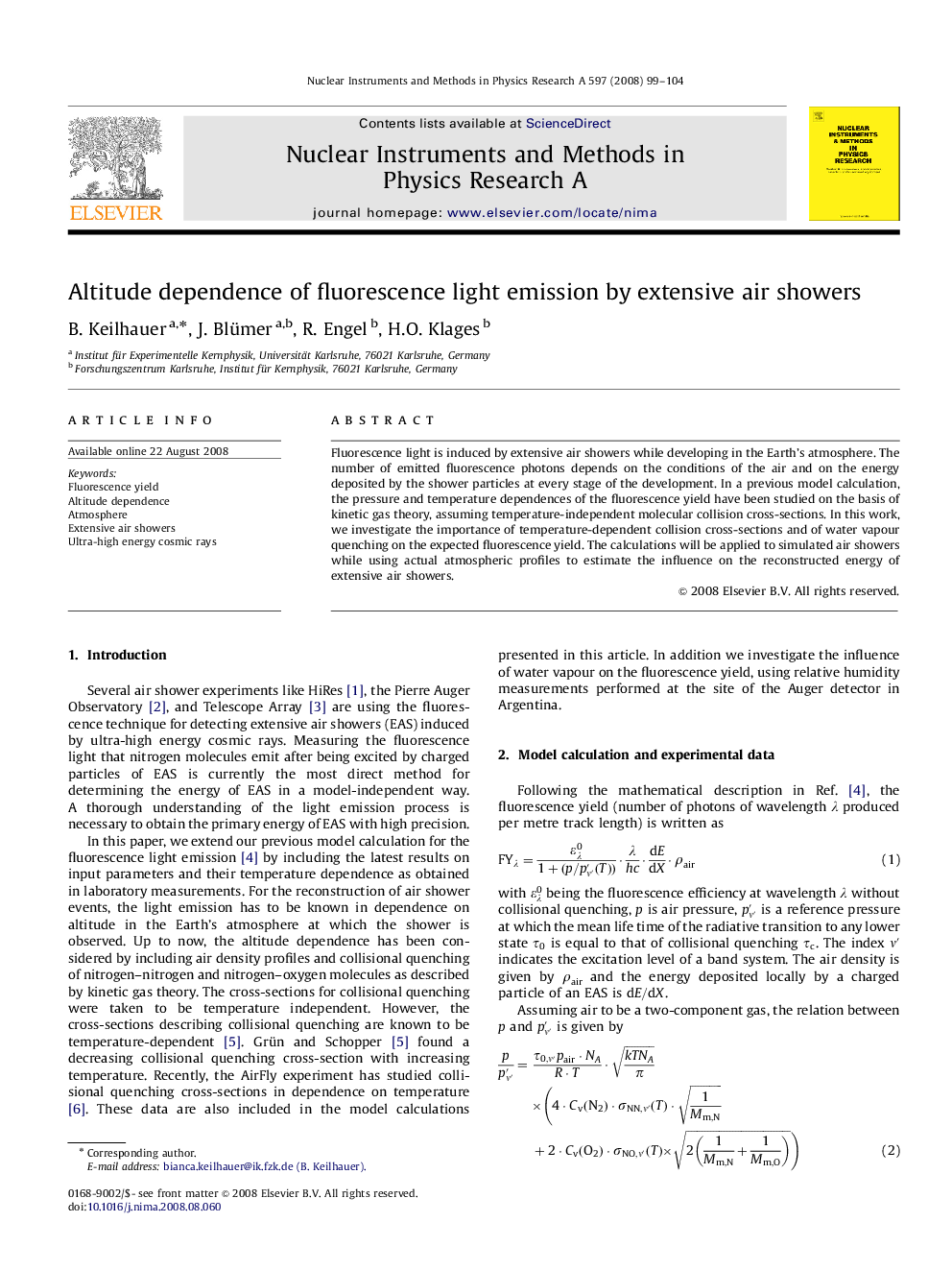| Article ID | Journal | Published Year | Pages | File Type |
|---|---|---|---|---|
| 1829069 | Nuclear Instruments and Methods in Physics Research Section A: Accelerators, Spectrometers, Detectors and Associated Equipment | 2008 | 6 Pages |
Fluorescence light is induced by extensive air showers while developing in the Earth's atmosphere. The number of emitted fluorescence photons depends on the conditions of the air and on the energy deposited by the shower particles at every stage of the development. In a previous model calculation, the pressure and temperature dependences of the fluorescence yield have been studied on the basis of kinetic gas theory, assuming temperature-independent molecular collision cross-sections. In this work, we investigate the importance of temperature-dependent collision cross-sections and of water vapour quenching on the expected fluorescence yield. The calculations will be applied to simulated air showers while using actual atmospheric profiles to estimate the influence on the reconstructed energy of extensive air showers.
